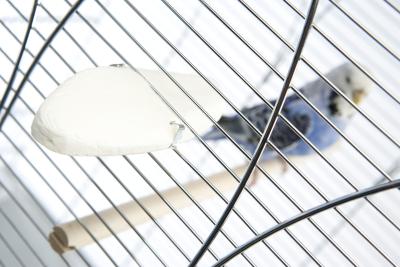Many dogs delight in chasing cars or bicycles, which causes them to run into the street where they may be injured or even killed. They may also run out to greet visitors and people walking by - especially those walking their dogs. Or they may simply have a wander lust to check out everything in their neighborhood and beyond. Responsible pet owners need a way to ensure that their dog is safe at all times.
Fencing an entire yard or even a large enough area for your dog to get the proper exercise can become quite expensive. Also, many subdivisions won't allow certain types of fencing, so you may be limited in your choices. In addition, most communities have leash laws that won't allow your dog to run loose, so some type of fencing is mandatory for a dog who spends unsupervised time outside.
An electric pet fence may be the best solution for all situations. The system is designed to establish boundaries for your pets so they will stay within a specified area. An invisible fence boundary can be installed practically anywhere - through hilly rocky terrain, wooded areas or even under water - all at a fraction of the cost of traditional fencing.
This type of system typically consists of boundary wire, a transmitter, a receiver that is attached to your dog's collar, a test light, training flags and a sign. If you have multiple dogs each one will need its own customized, computerized collar.
The wire is buried around the perimeter of the boundary area to establish the dog's free-roaming territory. A transmitter sends a radio signal along the buried wire, which is picked up by your pet's receiver collar. It emits a warning sound when the dog approaches the invisible boundary followed by a correction sensation.
Will your dog be harmed by the electric collar? Not at all, although the collar may be a bit uncomfortable at first due to the unexpected weight and bulk of the receiver in the collar. The sensation the dog feels if he gets too close to the boundary wire is similar to the sensation we feel when walking across a carpet and then touching a metal object. Annoying, but not painful.
To keep your pet in their safe play zone at all times, it's important to be sure your system is operating properly, so check it on a regular basis. Inspect the boundary wire to ensure it's intact and has power. Some electric fences come equipped with lights or a sound to alert you when there is a problem with the wire or power. Also, test the battery in the dog's collar regularly to be sure it is functioning properly. If the system isn't working, your precious pet is not protected.
Once your electric fence has been installed and tested, it's time to train your dog to understand how the system works. The training typically takes about two to three weeks. If you're training a puppy, it's best to begin when they are at least 8 weeks old and will obey basic commands.
In simple terms, the training consists of putting the computerized collar on your dog and walking him around the boundary area on a lead. The training flags will be an indication to both you and your dog where the boundary line has been established. Don't lead your dog too close to the flags, as the warning sound and correction can become more of a deterrent than a positive reinforcement. Let the dog walk along and learn on his own how close he can come to the flags.
Many fencing companies offer training as part of the installation package, which is certainly a plus and highly recommended. If training isn't included, there are training videos available. Do some research on the proper training procedures before you begin. You want this to be a positive learning experience for your pet rather than having your dog feel he is being disciplined for bad behavior.
Once your pooch has successfully learned the acceptable outdoor boundaries of his play area and the flags have all been removed, it's now okay to take your dog for a walk outside the area.
Establish a routine that is consistently used every time. Walk your dog to a point about a foot inside the edge of the boundary line and tell him to 'sit' or 'wait.' Be sure you're not so close that the computerized collar is being activated. Put the collar on that he associates with being walked on a lead and attach a short lead to this collar. Remove the computerized collar and then walk him across the boundary with a clear command such as "Ok, let's go."
By following this exact routine every time you leave the boundary area for a walk, your dog will learn that he can safely cross the boundary only under this specific set of circumstances.
When you return from your walk, enter the 'safe' boundary at the same place you left. Put the computerized collar back on your dog and remove the other collar and lead. Test your dog to make sure he remembers that when the computerized collar is on, he can only enjoy his established free area, and he can't leave this area on his own. Act like you are leaving the area again without speaking to your dog. If he follows you he will be corrected by the fence system. This reinforces the idea that he can safely leave the area only when a specific routine is followed.
Keep in mind that this system keeps your dog inside the boundary, but it won't prevent other dogs or animals from entering the area. If your dog is unsupervised when outside, make sure there is a way that he can get to safety inside the house or another secure area. A pet door is an excellent option.
Electric fence systems can also be used to train cats to stay within a specified area whether inside or out. They can be trained to stay off table tops and counters and both dogs and cats can be trained to stay away from each other's food and other areas where conflict may occur.
Electric pet fences really do work, and they provide an extra measure of safety and security for your precious pets. Your dog will reward you with playful exuberance and exemplary behavior inside their special playground.

 Homemade Bird Perch
Homemade Bird Perch
Homemade Bird Perc
Homemade Bird Perch
Homemade Bird Perch
Homemade Bird Perc
 The Blue
ParrotsThat TalkThe Blue-Che
The Blue
ParrotsThat TalkThe Blue-Che
 Learn what you need to Breed Indian Ringneck Parrots
Birds are beautifulThere are so many beautiful
Learn what you need to Breed Indian Ringneck Parrots
Birds are beautifulThere are so many beautiful
 How to Attract European Goldfinches in the Garden
Goldfinches are a real delig
How to Attract European Goldfinches in the Garden
Goldfinches are a real delig
 How to Find a Bird by Description
How to Find a Bird by Description
How
How to Find a Bird by Description
How to Find a Bird by Description
How